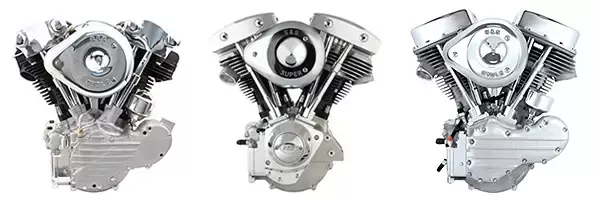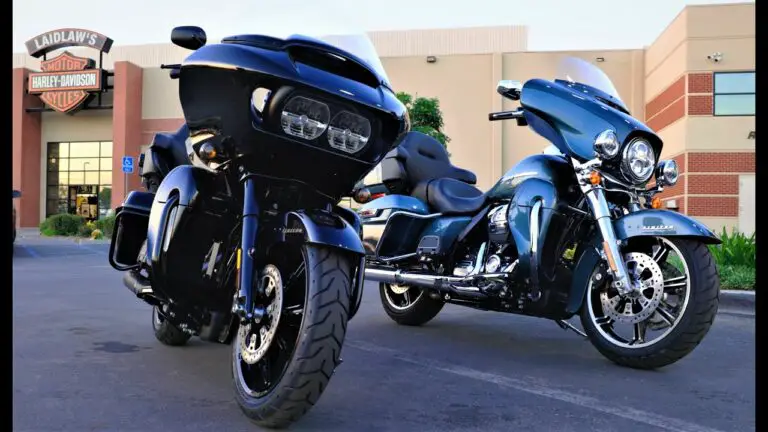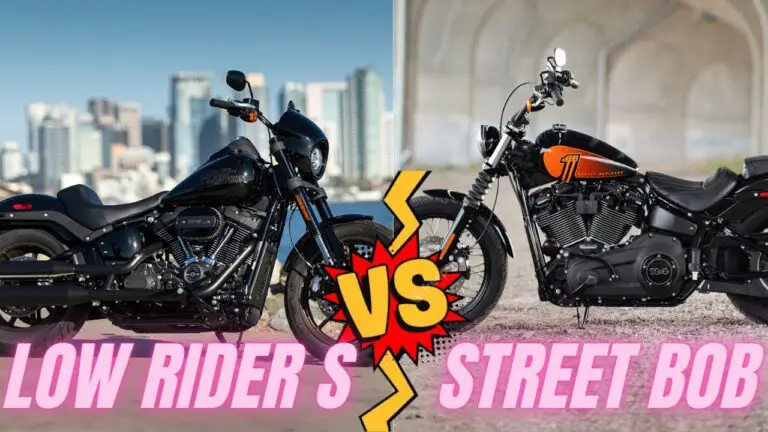The Evo Engine, also known as the Evolution engine, differs from the Twin Cam by its simpler, single-cam design. Harley-Davidson’s Evo boasts reliability and ease of maintenance, while the Twin Cam offers improved power and smoother operation.
Harley-Davidson enthusiasts often debate the merits of the company’s storied engines, particularly the Evo Engine and Twin Cam. The Evolution engine, which emerged in the mid-1980s, set itself apart with a solid build that gained a reputation for reliability and easier maintenance.
It resonated with riders looking for a dependable powertrain that echoed the classic Harley vibe. On the other hand, the Twin Cam, introduced in 1999, marked a significant leap forward in power delivery and engine smoothness, making it a favorite among riders seeking a more refined experience. Each engine has its distinct place in Harley-Davidson’s legacy, charming different sectors of the motorcycle community with their unique blend of performance and character.
Introduction To Harley-davidson’s Engine Legacy
Harley-Davidson stands as a monument to American engineering. Through innovative designs and iconic engines, this brand has fueled the passion of countless riders. As we delve deeper, we uncover the marvels of its engine history.
The Birth Of An Icon: A Brief History Of Harley-davidson
In 1903, four young men began a journey in Milwaukee that would define motorcycle culture. Harley-Davidson sprouted from a modest shed into a global phenomenon. The company’s heartbeat lies in its legendary engines. These engines became the signature note of the open road.
- 1909: The first V-Twin engine roars to life.
- 1936: The powerful Knucklehead engine emerges.
- 1948: The Panhead engine brings new technology.
- 1966: The Shovelhead engine increases power.
Understanding The Monikers: What Are Evo And Twin Cam Engines?
Evo, short for Evolution, marked a turning point in 1984. It represented reliability and performance. The Twin Cam followed in 1999. This engine offered more power and an updated design. Each engine has its place in Harley’s storied history.
| Engine | Introduction Year | Key Features |
|---|---|---|
| Evo | 1984 | Aluminum construction, reduced weight, enhanced reliability |
| Twin Cam | 1999 | Two camshafts, increased power, improved airflow |

Credit: www.reddit.com
Evo Engine: The Evolution Revolution
Harley-Davidson’s Evo engine marked a turning point in the motorcycling world. This power plant became a symbol of reliability and performance. Let’s explore the revolution this engine brought to the roads and hearts of bikers everywhere.
Technical Breakdown Of The Evo Engine
The Evo engine, also known as the Evolution engine, is a marvel of design. It replaced the Shovelhead engine and introduced aluminum heads and cylinders for better cooling and efficiency. Let’s dive into its technical aspects:
- Displacement: 1340cc or 80 cubic inches
- Design: Air-cooled, V-twin
- Valvetrain: Overhead valves with hydraulic lifters
- Compression Ratio: An increased ratio for more power
- Ignition: Electronic
Historical Impact And Popularity
The Evo engine’s introduction in 1984 was a game-changer. It redefined customers’ expectations and solidified Harley’s reputation for building robust machines. Riding the wave of the custom bike era, the Evo’s reliability and improved performance endeared it to riders worldwide.
The Evo Engine’s Contributions To Motorcycle Culture
More than just an engine, the Evo became a cultural icon. It fueled a custom build movement and found a fervent following. Bikers celebrated it for its distinct sound and customization potential. Events, clubs, and media sprung up, centered around Evo-powered machines.
Common Models And Applications Of The Evo Engine
The Evo engine powered a variety of Harley models, becoming a beloved heart for many classics. Here are a few notable examples:
| Model | Year(s) |
|---|---|
| FXR Super Glide | 1986–1994 |
| Softail Custom | 1986–1999 |
| Heritage Softail | 1986–2006 |
| Electra Glide | 1984–1998 |
| Low Rider | 1987–1994 |
Twin Cam Engine: The Next Generation
The Twin Cam engine revolutionized the motorcycle industry. It brought new life to performance and reliability for enthusiasts around the world. Let’s dive into the technical strides that the Twin Cam made following its predecessor, the Evo engine.
Exploring The Technical Enhancements In Twin Cam Engines
Twin Cam engines boosted power and offered a smoother ride. They featured two camshafts which allowed for better airflow. Better airflow led to enhanced combustion and more power.
- Improved valve timing: More precise control over engine operations
- Higher compression ratios: Increased engine efficiency and power
- Better lubrication systems: Extended engine life
The Twin Cam Era: Performance And Reliability Upgrades
The Twin Cam earned its reputation for reliable performance. Engine refinement meant these bikes were perfect for long rides.
- Less vibration: Enhanced rider comfort
- Robust design: Fewer breakdowns and repairs
- Superior materials: Parts resisted wear and tear
Model Variants And Evolution Of The Twin Cam Series
The Twin Cam series evolved over time. Each variant offered different advantages. The Twin Cam 88 was born first. It was followed by 96, 103, and 110 engines.
| Model | Displacement | Features |
|---|---|---|
| Twin Cam 88 | 1450cc | Baseline for power and reliability |
| Twin Cam 96 | 1584cc | Increased stroke for more torque |
| Twin Cam 103 | 1690cc | Balanced for performance touring |
| Twin Cam 110 | 1801cc | Top of the line for power |
Comparing The Twin Cam To Its Predecessor: What Changed?
The Twin Cam was a big step up from the Evo. It offered more torque and a quieter operation.
| Feature | Evo Engine | Twin Cam |
|---|---|---|
| Camshafts | Single | Double |
| Vibration | More | Less |
| Power | Good | Better |
| Reliability | High | Higher |

Credit: cyrilhuzeblog.com
Head-to-head: Evo Engine Vs. Twin Cam
Two giants in the Harley-Davidson universe, the Evo and Twin Cam engines, stand as benchmarks of American motorcycle engineering. Each motor brings its own flavor to the road, prompting enthusiasts to debate their merits. Let’s dive into a head-to-head comparison, examining key areas that impact riders’ choices and experiences.
Performance And Efficiency: A Comparative Analysis
Power delivery and fuel efficiency define a rider’s experience. The Evolution, or Evo, engine, known for its reliability, also surprises with a smooth, consistent performance. The Twin Cam, on the other hand, boasts greater horsepower and torque for a more spirited ride. It’s a tussle between the steady charm of the Evo and the robust punch of the Twin Cam.
- Evo: Smooth and steady power.
- Twin Cam: More power and torque.
Durability And Maintenance: Which Engine Lasts Longer?
The true test of an engine lies in its longevity and ease of maintenance. Evo engines have earned a reputation for enduring the test of time with minimal fuss. Twin Cam engines, with their complex design, might require more attention. In terms of maintenance, the simpler construction of the Evo often translates to a longer-lasting, hassle-free ride.
Consumer Preferences: Riders’ Perspectives On Evo And Twin Cam
What do riders think? Owners of the Evo engine cherish its classic vibe and trouble-free nature. Twin Cam enthusiasts, meanwhile, praise the engine’s modern features and power surge. Both camps have loyal followers, pointing to a split in preference over tradition versus innovation.
| Evo Engine | Twin Cam |
|---|---|
| Classic, reliable riding experience. | Modern, high-performance feel. |
Aftermarket Support And Customization Potential
Customization unlocks the soul of a bike. The Evo engine, with its widespread popularity, enjoys vast aftermarket support. The array of available parts allows riders to tweak their bikes to their heart’s content. Twin Cam engines also benefit from aftermarket options but may require more specialized services due to their more recent and complex design.
- Wide range of aftermarket parts for Evo.
- Specialized upgrades for Twin Cam.
The Future Of Harley-davidson Engines
Harley-Davidson is known for creating powerful machines that roared through decades. As new technologies emerge, the brand looks ahead. The future of Harley-Davidson engines is bright with innovation, blending their rich history with cutting-edge advancements.
Innovations And Trends In Motorcycle Engine Design
Motorcycles are evolving faster than ever before. Technological leaps are shaping the engines that power these iconic rides:
- Digital Integration: Smart technologies provide riders with enhanced control and connectivity.
- Electric Power: Electric motors offer a clean, efficient alternative to traditional engines.
- Variable Valve Timing: This optimizes performance across different speeds, improving efficiency.
- Lightweight Materials: Advances in metallurgy lead to lighter, stronger engine components.
Harley-davidson’s Current Engine Offerings: Beyond Evo And Twin Cam
Harley-Davidson is pushing its engineering legacy forward. It now celebrates engines such as the Milwaukee-Eight and the Revolution Max. These engines leverage modern technology for improved power and reliability:
| Engine Model | Key Features |
|---|---|
| Milwaukee-Eight | More power, refined cruise noise, improved cooling |
| Revolution Max | Variable Valve Timing, liquid cooling, high RPM capabilities |
The Legacy Of Evo And Twin Cam In Future Harley-davidson Models
The Evo and Twin Cam engines are legendary. Their influence extends into future designs. Remnants of their robust architecture and V-Twin rumble will live on. Fans can expect to see their spirit in hybrid-engine technology and homage elements in new models. Expect features like these:
- Balanced performance and character
- Durable design, honoring the Evolution and Twin Cam engines’ legacy
- Visual cues linking past and present Harley-Davidson models

Credit: m.youtube.com
Frequently Asked Questions On Evo Engine Vs Twin Cam
Is A Evo Motor Better Than A Twin Cam?
The Evo (Evolution) motor and Twin Cam are different Harley-Davidson engines; preference depends on performance and customization goals. Evo engines are known for reliability and easier maintenance, while Twin Cams offer more power and modern features. Choosing one over the other is subjective to rider needs.
How Can You Tell A Twin Cam From An Evo?
To differentiate a Twin Cam from an Evo, check the engine shape: Twin Cams have two distinct lobes, while Evos are more rounded. Also, inspect the valve covers; Twin Cams feature a “twin cam” inscription.
Are Harley Evo Motor Reliable?
Harley Evo motors, produced from 1984 to 1999, are widely known for their durability and reliability. Regular maintenance can ensure these engines perform well for many years.
What Is The Difference Between Evo And Twin Cam 103?
The Evo and Twin Cam 103 are both Harley-Davidson engines. The Evo, short for Evolution, is an older model introduced in 1984, renowned for its reliability and simple design. The Twin Cam 103, launched in 1999, offers greater displacement and more power for improved performance.
Conclusion
Deciding between Evo and Twin Cam boils down to personal preference and riding style. The Evolution engine’s reliability pairs with classic charm, while the Twin Cam offers enhanced power and modern performance. Whichever you choose, both engines carry the proud legacy of Harley-Davidson motorcycles, ensuring your ride thrives on the open road.



